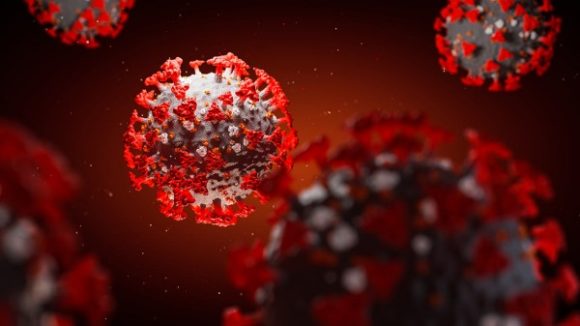Kansas reported another seven-day record for new coronavirus cases, with 16% of the tests for the virus during that period coming back positive on Monday.
The continued spike in confirmed and probable cases comes as officials in some Kansas counties worry that they won’t be able to spend some coronavirus relief funds before the end of the year as federal law requires. Some counties haven’t seen any of $400 million in aid allocated by the state in June because of the state’s process for reviewing their spending plans.
The Kansas Department of Health and Environment said Kansas had 2,037 new confirmed and probable coronavirus cases since Friday, an increase of 3.6% to make the total 58,629 since the pandemic reached the state in early March. Kansas had an average of 667 new cases a day for the seven days ending Monday, or 7% higher than the previous record of 622 for the seven days ending Wednesday.
The state also reported five new COVID-19-related deaths, bringing the pandemic total to 637. Deaths continued to represent about 1.1% of the total cases.
During a news conference Monday, Gov. Laura Kelly said she was concerned with the lack of a statewide mask mandate and testing strategy. Kelly said she is also worried Kansans with preexisting health conditions may lose their health insurance if the U.S. Supreme Court overturns the Affordable Care Act.
“This week numbers continue to grow. And at the risk of sounding like a broken record, my concerns remain the same, especially because today we saw the highest number of cases in a single reporting period,” Kelly said.
Kelly also announced her administration’s plans to implement a new statewide testing strategy in coming weeks. She said the plan will increase routine testing in congregate facilities, including nursing homes, correctional facilities and schools, and “areas of the state with high ongoing community spread.”
She said the new plan includes testing people who are asymptomatic in areas where there are larger concentrations of COVID-19.
The state has seen its testing increase since September began to about an average of nearly 4,200 a day for the seven days ending Monday. Kansas officials want to see the state’s rate of positive tests drop, but the seven-day figure of 16% was the largest in three weeks.
Meanwhile, counties are now answering questions from the state’s Office of Recovery about how they plan to spend the $400 million in aid, The Topeka Capital-Journal reported. The counties had to submit their spending plans to the office by mid-August, and the office responded earlier this month.
The money was the first part of $1.25 billion in aid from the federal government to Kansas. The state’s 105 counties face a time crunch because they have until the end of the year to spend the money or return it, and they’re navigating the state’s back-and-forth review process.
“As soon as we heard that the money was going to have to be spent by the end of the year, all of our brains exploded,” said Jeremy Johnson, a county commissioner in Crawford County in southeast Kansas, which has yet to receive any of its $7.8 million in relief funds.
Federal law requires that the funds be used only for COVID-related purposes, and the state is aware of the pressing deadline that counties face. Recovery Office executive director Julie Lorenz, also Kansas transportation secretary, said a close eye needs to be kept on counties with plans to spend much of the money toward the end of the year.
Johnson doesn’t blame the state, saying he wants it to take the time to meticulously analyze and ensure all of the money is spent. He said the bigger issue is the end-of-the-year deadline set by the federal government.
In its report for Ford County, the Recovery Office questioned the county’s plan to use part of its $11.1 million dollars for construction of two city buildings.
The city of Ford needs a new building for city administration functions, said city clerk Penny McAllister, because the one she operates out of right now is an old school building with no windows, ventilation or enough spacing. She said retrofitting the building could cost millions of dollars, while building a new one would cost $245,000.
Was this article valuable?
Here are more articles you may enjoy.



 Biden Administration Raises FEMA Bar for Flood Resilience
Biden Administration Raises FEMA Bar for Flood Resilience  Insurers Hike Rates as Extreme Storms Like Beryl Proliferate
Insurers Hike Rates as Extreme Storms Like Beryl Proliferate  Deere Retreats From Diversity Measures After Online Attacks
Deere Retreats From Diversity Measures After Online Attacks  Hurricane Beryl Triggers Record Payout for Caribbean Insurer
Hurricane Beryl Triggers Record Payout for Caribbean Insurer 

